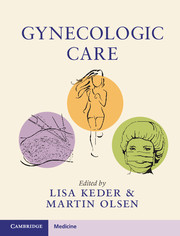Book contents
10 - Vaginal Hysterectomy
from Section 2 - Gynecologic Surgery
Published online by Cambridge University Press: 01 February 2018
Summary
Introduction
Hysterectomy is one of the most common surgical procedures performed in the United States. The literature supports vaginal hysterectomy as the safest and most cost-effective route of hysterectomy for benign disease whenever technically feasible. However, vaginal hysterectomy remains an underutilized route of hysterectomy. Proposed reasons why vaginal hysterectomy is not performed more frequently include: (1) the development of technology to perform laparoscopic and robotic hysterectomies; (2) decreased surgeon experience with vaginal hysterectomy; and (3) lower reimbursement for vaginal procedures.
This chapter will review indications and contraindications to vaginal hysterectomy. It will also discuss the benefits of performing a hysterectomy via the vaginal route whenever possible. Relevant anatomy and the steps of the procedure will be reviewed. Finally, the chapter will review the prevention of complications such as cuff cellulitis, dehiscence, and bleeding pedicle. Management of these complications will also be discussed.
Scope of the Problem
Approximately 30 percent of women in the United States will undergo a hysterectomy prior to the age of 60. Ninety percent of hysterectomies are performed for benign indications including abnormal uterine bleeding, fibroids, and uterine prolapse. When technically feasible, vaginal hysterectomy appears to be superior to both laparoscopic and abdominal hysterectomy. A recent Cochrane review concluded that vaginal hysterectomy is associated with a faster return to normal activities and less febrile morbidity than abdominal hysterectomy. Laparoscopic hysterectomy is associated with a greater number of urinary tract injuries and a significantly longer operating time than vaginal hysterectomy. The cost of vaginal hysterectomy is significantly less than robotic, laparoscopic, or abdominal hysterectomy, making this the preferred route of surgery.
The approach to hysterectomy varies widely across countries, regionally within countries, and even among surgeons working at the same hospital. The physician determines the plan for surgery, and ultimately the choice depends on the surgeon's experience, preferences, and individual patient characteristics. Despite the benefits of vaginal hysterectomy that have been repeatedly demonstrated by numerous trials, vaginal hysterectomy remains an underutilized procedure in the United States. The proportion of hysterectomies performed vaginally in the United States decreased from 24.8 percent in 1998 to 16.7 percent in 2010. As of 2013 the proportion of inpatient vaginal hysterectomies was stable at 16.9% despite a decrease in abdominal and an increase in laparoscopic procedures since 2010.
- Type
- Chapter
- Information
- Gynecologic Care , pp. 89 - 93Publisher: Cambridge University PressPrint publication year: 2018



